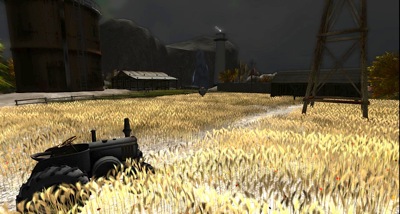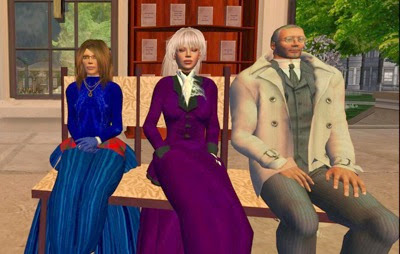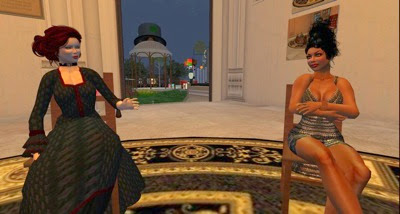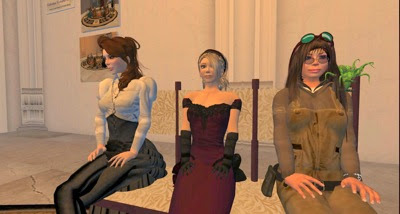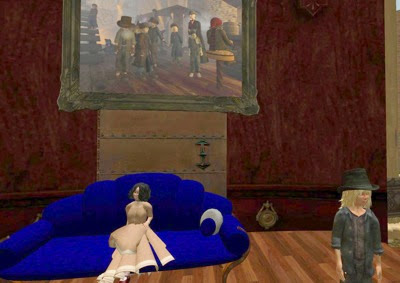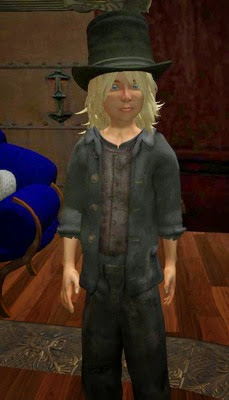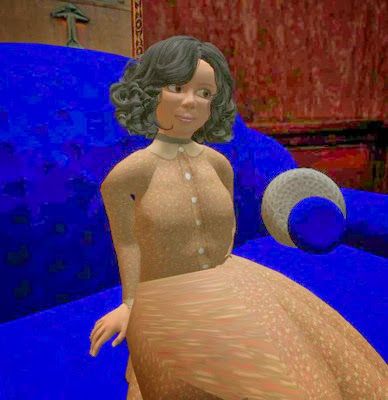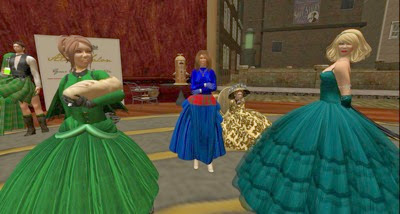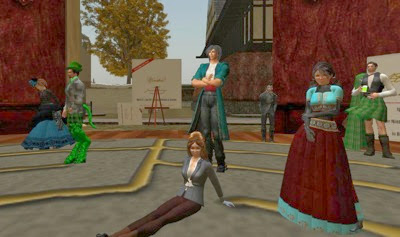Beware! Thar be spoilers below...
A Christmas Carol
A lovely Christmas-oriented tale: on their honeymoon, Amy and Rory contact the Doctor when their spaceship is about to crash on a human-occupied planet. Kazran Sardick, the only person who can allow the ship to land safely won't do so because he sees no benefit to himself. The Doctor manipulates the man's past to make him more agreeable to save the ship. In the process, we learn why he is so bitter. The Doctor travels to Sardick's past, where Sardick is a young boy and he and the Doctor encounter a shark that swims in the planet's atmosphere. In order to return the shark to the upper atmosphere where it belongs, young Sardick leads the Doctor to a vault of frozen people, kept as "security" for the elder Sardick's lending business. They thaw a beautiful young woman, Abigail, who sings to the shark to calm it while the Doctor uses Abigail's storage unit to return the shark. Young Sardick falls in love with Abigail, so he and the Doctor return once a year on Christmas Eve to liberate Abigail and travel in the TARDIS. When Sardick is an adult, however, Abigail tells him a secret - we later learn that she is terminally ill and each trip out of the cryogenic chamber has taken a day off her life; she is now down to her last day - and Sardick tells the Doctor that their trips must stop. Although the Doctor has changed Sardick's past, the old man is still bitter because he cannot be with Abigail. The Doctor shows Sardick the plight of the doomed ship (the "ghost of Christmas present"), but that does nothing to soften his heart. Finally, the Doctor brings young Sardick to the present, where young Sardick sees how much his older self has become like his miserly father. This finally changes the present-day Sardick's mind, but by now he has changed so much that he can no longer operate the controls to save the ship. The Doctor instead has Sardick thaw Abigail one last time and uses her singing and a sonic screwdriver to disrupt the atmospheric storm and allow the ship to land safely. Sardick and Abigail take one last carriage ride together.
Despite some plot holes, this was a sweet episode. I loved the way it took Dickens' story in a different direction.
The Impossible Astronaut/Day of the Moon
The season opener starts with a bang: Amy and Rory receive a mysterious summons to Utah. There, they find River Song, who has received a similar summons. The Doctor arrives, but says he is nearly 200 years older than when the trio last saw him. When a figure in a space suit appears at the edge of the lake, the Doctor walks to meet it and is killed. Yet another figure appears, with another summons. He was instructed to bring a can of gasoline, which the group uses to burn the Doctor's body. They regroup to a diner, where the Doctor walks in, now 200 years younger than the body they just burned. He, too, received a summons. The others do not tell him that they saw the death of his future self.
From there, the story moves back to 1969, on the eve of the moon landing. The TARDIS crew search for a girl who is making frightened calls to President Nixon. They materialize in the Oval Office, and triangulate the girl's calls to Cape Canaveral, Florida. Amy encounters an alien, which she captures on her phone camera, then forgets about as soon as she turns away. In Florida, they discover a space suit and alien technology. They encounter more of the aliens, who are revealed to be the Silent, again forgetting about them as soon as they are out of visual range. The little girl appears in a space suit; Amy tries to shoot her but misses. Later, Amy tells the Doctor she is pregnant.
Three months later, during which time Amy, Rory, and River have been trying to track the Silent, they are chased and apparently killed by the FBI. The Doctor has been captured and held in Area 51. (It's not clear why any of this was necessary for the plot.) They are reunited in the "unbreakable" cell, where the now-invisible TARDIS is located. They track the Silent and, later, insert the taunt that "you should kill us on sight" into the televised message from Apollo 11 so that humanity starts to hunt the Silent.
The young girl from the space suit appears in New York City, dying, before she regenerates like a Time Lord, as the episode comes to a close.
The double episode was a dramatic way to start the new season, and provides a pair of story arcs. The first, completed by mid-season, was that of Amy's pregnancy (though the scanner on the TARDIS oscillates between showing her pregnant or not). The second, of course, is the Doctor's death. Despite those twin story arcs and some scary moments during the episodes, the Silent seem to be rather amorphous villains. We don't know what they want - they seem to be guiding humanity to build a space suit, but this is a space-faring race - or why they have been occupying Earth for so long.
The Curse of the Black Spot
Arrgh! There be pirates! The Doctor responds to a distress signal that lands the TARDIS on a 17th century pirate ship becalmed in an ocean - where a ghostly siren appears to be marking injured crewmen with a black spot on the palm. The marked crewmen later vanish. The Doctor tries to deduce what causes the siren to appear, first hypothesizing that she is drawn to water, then realizing that reflections actually cause her to appear. The captain's son has stowed away on the ship, and clearly suffers from a respiratory disease. Soon he is taken away. When Rory falls into the ocean, the Doctor suggests the siren will get there before they can, and that the "victims" are not dead. The captain, Amy, and the Doctor prick themselves in order to summon the siren, and find themselves transported to an alien ship, invisible and in the same position as the pirate ship. The ship's crew is dead - and the siren is the ship's medical program, keeping the injured humans alive. (Shades of the hologram doctor from
Star Trek: The Next Generation!)
Pirates are fun. The episode was clearly designed to be lighthearted and not particularly deep.
The Doctor's Wife
Responding to a distress call from a Time Lord, the Doctor, Amy, and Rory follow a rift to an asteroid outside the universe. They discover people whose lives have been extended because they are made out of the body parts of dead Time Lords. The asteroid itself is sentient, feeding on the energy in a TARDIS. The asteroid transfers the essence of the Doctor's TARDIS into one of the people trapped on the asteroid and, after learning that the Doctor is the last of the Time Lords, steals the TARDIS to return to the universe to seek out other sources of energy. The Doctor, with the help of the humanized TARDIS, builds a new control center from spare parts and returns to his TARDIS, where the asteroid consciousness is terrorizing Amy and Rory. The essence of the TARDIS becomes once again integrated.
The idea of having personifying the TARDIS is a brilliant one, and the dialogue between the Doctor and Idris as the TARDIS is terrific. At one point, he complains that she doesn't always take him where he wants to go; she replies that she always takes him where he
needs to go. She reveals that, much as he thinks he chose her when he stole the TARDIS, she believes she chose the Doctor, because she always wanted to travel. And I loved the fact that the TARDIS has trouble with verb tenses – as a creature that lives in all times simultaneously, she can’t quite figure out how to express time linerarly. Brilliant. A very sweet episode.
The Rebel Flesh/The Almost People
Finding themselves on Earth in the 22nd century, the Doctor, Amy, and Rory investigate a monastery now used to pump a valuable acid to the mainland. They discover that the crew uses replicas of themselves, made out of a material called "Flesh," to do the dangerous work, destroying replicas that fall into the acid. These replicas have the memories of the originals. A solar storm makes the doppelgängers sentient, and the Doctor works to unite the originals and their Flesh counterparts, as each wants to destroy the other. At one point, a doppelgänger of the Doctor appears, each amusing the other no end, while Amy insists that, despite their common memories and appearance, "her" Doctor is the only real one. (Amy does not realize that the two Doctors switched shoes - the only way she could tell them apart - and that the one she trusted was actually the doppelgänger.) Some of the originals and the Flesh reconcile, while others hunt them down. The Flesh Doctor sacrifices himself to allow the rest to escape in the TARDIS. Amy begins to go into labor, despite showing no signs of pregnancy. The Doctor reveals that he has known for some time she is Flesh, and he turns her back into the raw components of Flesh. The real Amy wakes and gives birth.
A Good Man Goes to War
Having revealed in the previous episode that Amy was held captive, the Doctor now discovers that she is being held on an asteroid called Demon's Run (a pun on "demon rum"?) and he assembles an army of his old debtors to help rescue her. Amy gives birth to a child, whom she calls Melody, before the child is taken from her. The assembled army defeats the forces guarding the base quickly - too quickly, as it turns out, because the rescue of Amy and Melody is a trap. Melody, as Amy was in the earlier episode, turns out to be made of the Flesh; the real Melody is still in captivity, and her captor escapes with Melody, taunting the Doctor that he has failed. The Doctor discovers that Melody has Time Lord DNA in her; he surmises that the baby was conceived on the TARDIS and the baby's DNA was influenced by the time vortex. River Song appears, after earlier saying she could not help because she could not influence these events. She reveals that she is the adult Melody Pond - "Pond" turning into "River" and "Melody" into "Song."
Let's Kill Hitler
The title and the ostensible A story are very much a red herring in this episode. Amy and Rory summon the Doctor to Leadworth to find out whether he has found baby Melody. Amy's friend Mels joins them, pulls a gun on the Doctor, and insists they use the TARDIS to travel to 1930s Berlin, where they crash-land in Hitler's office. At the same time, a Teselacta, a shape-changing vehicle with miniaturized humans inside, has come from the future to capture war criminals. Mels is shot and, before dying, regenerates into River Song, though she does not know that name. River/Mels then tries to kill the Doctor several times before succeeding with poisoned lipstick. The Doctor, mortally wounded, has only a half-hour to live, during which time he prevents the Teselacta from killing River/Mels - as "River Song" is a war criminal for…having killed the Doctor. River/Mels uses the TARDIS to rescue Amy and Rory from the Teselacta, returning to find the Doctor near death. He tells River/Mels that he has a message for "River Song," which he delivers before dying. Amy shows River/Mels that she is, in fact, River Song, at which point she uses the regeneration energy from her recent regeneration, as well as her remaining regenerations, to revive the Doctor.
The episode is a bridge between "A Good Man Goes to War," which establishes that Melody Pond will one day be River Song, and the rest of this story arc. The Doctor remains witty even as he is dying, and, though we know he has to be revived somehow - as the audience, Amy, Rory, and River, and now the Doctor, all know that he is supposed to die in Utah in 2011 - that River was the one who resurrected him was surprising.
Night Terrors
Egads. Never have children on a show. The Doctor's psychic paper receives a message from eight-year-old George, asking someone to get rid of the monsters in his bedroom. The TARDIS lands at an apartment complex and the Doctor, Amy, and Rory split up to look for the precise apartment. (Why they could find the right building at the right time but not the specific apartment is a mystery.) Amy and Rory take an elevator that falls and crashes, and they wake up in a strange house. The Doctor, having found George, tells his father that "The monsters are real." Naturally, George turns out to be an empathetic alien, a Tenza, who has taken on the appearance and characteristics that his childless parents desired, and has misinterpreted a conversation that his parents had, believing they want to get rid of him. His fears have become real. The Doctor finally convinces the boy that he has the power to make the monsters go away, but it his father, who assures George that he will always be loved, that saves the day.
Parts of the story are frightening, and the ending is very sweet, but otherwise this seems like a minor diversion in the overall arc of the season.
The Girl Who Waited
The TARDIS stops at the planet Apalapucia for sightseeing, not knowing that a plague affecting beings with two hearts (a script ploy to give Matt Smith some time off) has resulted in a quarantine center being set up. Those quarantined are in a time stream moving faster than reality, so that visitors can spend an afternoon interacting with their loved ones over the course of a lifetime. Amy gets separated from the Doctor and Rory and ends up in quarantine, as the robotic helpers refuse to believe she is not from Apalapucia. (Seems odd, but okay.) As the Doctor can't risk infection, he stays in the TARDIS while Rory searches for Amy. Because of the relative time differential, by the time Rory reaches her 36 years have passed for her. She survives by avoiding the treatment robots. She is bitter about being left behind. For Rory's sake, she agrees to help with the Doctor's plan to bring the time streams together, but only if she can leave on the TARDIS with the younger Amy; otherwise, she'll cease to exist. The Doctor agrees, but it's pretty obvious he is lying. The older Amy reluctantly understands that both Amy's can't co-exist, and that her younger self should be the one who can spend time with Rory.
This is an emotionally challenging and satisfying story. The scenes with the older Amy are heartbreaking. She is bitter about her situation and furious with the Doctor, but realizes she still loves Rory, who loves them both. (As a practical matter, was he
really serious about having two wives, one 36 years older than the other? Something tells me this would not end well.) This episode is another illustration that "fixed" events can in fact be changed, as the younger Amy remembers having the conversation with the older Amy and the older one refusing to help. The Doctor tells Amy that the only person who can change a predestined future is someone as willful as Amy - or, one might think, the Doctor himself, given his apparent destiny shown in "The Impossible Astronaut"?
The God Complex
The TARDIS is pulled into a structure that appears to be a 1980s hotel, though the Doctor identifies it as alien. He, Amy, and Rory meet four people who tell them that a Minotaur-like creature roams the halls, feeding on people, while individual rooms of the hotel contain personalized objects of fear. After several of the group are killed, the Doctor hypothesizes that the beast feeds not on fear but on the faith that an individual has, whether religious (the Muslim woman) or secular (the gambler who believed in luck). He talks to the beast, who is actually a prisoner on a prison ship, being kept alive against his will by feeding on the victims provided to him. He realizes that Amy's faith in the Doctor to get them out of any problem would make her a victim, so he tells her "I'm not a hero. I really am just a madman in a box." When Amy's faith in the Doctor is broken, so is the mechanism that keeps the beast alive. As he dies, he tells the Doctor that "death would be a gift" for anyone infinitely-lived. Realizing that he cannot keep risking Amy and Rory's lives, he drops them on Earth, with a new house and car, and leaves alone.
The episode was a mixed bag. The setup was goofy, the monster was a bit goofy, but there were several nice parts of the episode. The alien Gibbis, from a race of cowards who will surrender to anyone, says "Our anthem is 'Glory to [Insert Name Here].'" Joe tells the Doctor "We're going to die here," to which the Doctor replies, "They didn't mention that in the brochure." Rita responds to the Doctor's assurances that he will get them out by saying, "Why is it up to you to save us? That's quite a God Complex you've got." (And, indeed, he seems to take this to heart at the end.) And what fear was in the Doctor's room? (We never see; he says only "It had to be you." Rose?)
Closing Time
On the day before he is supposed to die, the Doctor revisits Craig, from "The Lodger," for a "social call." He discovers that people have disappeared, and, next thing you know, he has a job in a department store and found a Cybermat - a small mechanical device used by Cybermen - and a teleporter in an elevator. He and Craig stumble across a crashed ship with damaged Cybermen, who are using kidnapped people to convert. The Doctor is captured, and Craig comes to rescue him before Craig is captured as well. When the Cybermen try to convert him, however, the sound of his son's voice ("He prefers to be known as 'Stormageddon'") enables Craig to resist the conversion and defeat the Cybermen.
In the coda to the episode, we see River Song, with her newly-minted Ph.D.. She is visited by the woman with the eyepatch and several of the Silent. Eyepatch woman tells River that she is the one who kidnapped and raised Melody Pond, and that River was always designed to kill the Doctor. One of the Silent brings in the astronaut suit from the first episode of the season.
Though largely a means to set up the next episode, this was a sweet tale, bringing back the jovial Craig and showing the power of a father's love for his child. More good lines, including when the Doctor shows up at Craig's door step: "Social call. Thought I should try one out." Also: "Babies are sweet. People talk to them. That's why I travel with humans." (Ouch!) The shushing gag was very funny. "Don't worry, I have an app for that." And just before the brief cameo by Amy and Rory, who don't see the Doctor, though he sees them, the Doctor says, "It's a coincidence. It's what the universe does for fun." Indeed.
The Wedding of River Song
The last episode of the season brings us back to the lake in Utah, on April 22, 2011. The same setup as in "The Impossible Astronaut," with the Doctor ready to die, the suit opens, and it's… well, we all knew it was River Song, right? But she can't shoot him, and all of time occurs simultaneously at 5:02 p.m. For some reason, that meant that pterodactyls fly above London and Holy Roman Emperor Winston Churchill is in charge. Not sure how that follows, but we're rolling with the punches. The Doctor explains to Churchill that the Silence wants him dead because at a future date "On the fields of Trenzelor, at the fall of the Eleventh, when no living creature can speak falsely or fail to answer a question will be asked—one that must never be answered. And Silence must fall when the question is asked." Amy Pond shows up to rescue the Doctor from a large number of Silents. She can remember the TARDIS and her previous life only by drawing the things she experienced. They take a train to "Area 52" in Egypt, where a paramilitary group headed by "Captain Williams" (Rory) has a large number of Silents in custody, along with Eyepatch Lady (Madame Kovarian), being guarded by River Song. The Silents break out of their confinement, in order to kill the Doctor. Amy kills Madame Kovarian while River explains that she's been sending out requests for help all throughout time. The Doctor says again that nothing can restore time except his death. He marries River and whispers a secret to her - "my name," he says - and they touch, which brings them back to Utah, where she kills him.
In the coda, River visits Amy, who is disconsolate until River tells him what the Doctor
really said to her - "look into my eye" - showing her that he had a plan to cheat death by using the Teselecta robot to look like him and "die" in his stead. Then the Doctor tells Dorium (the blue Sydney Greenstreet character from "A Good Man Goes to War") that his apparent death was designed to make people forget about him, that he had gotten "too big." Dorium implies that the question that must not be answered was "Doctor who?"
Oh dear. What an unfortunate mess of an episode. From the obvious ploy (miniature people inside a ship that can take on anyone's appearance - and showing up in the pre-credits sequence, no less - telegraphs the ending) to cringe-inducing lines (calling River Song "stupid" as she's trying to save the Doctor to the literal nature of the title. Sigh. The Silents weren't particularly menacing, even if they did kill a number of soldiers (though even that doesn't count, as that reality ceased to exist), nor was Eyepatch Lady. But the biggest problem with the episode was that it created an irresistible setup - the Doctor had to die at precisely that spot at that time, or Bad Things would happen to the universe - and then reneged on the premise by using something that looked like the Doctor but wasn't the Doctor. The premise wasn't that a Doctor lookalike had to die, it had to be the Doctor, and he didn't die, so… my head hurts.




